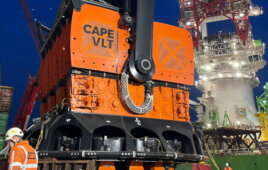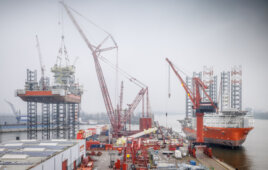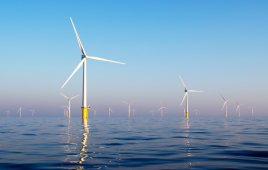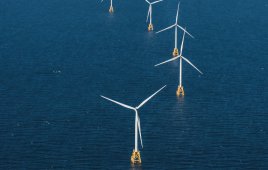The National Renewable Energy Laboratory (NREL) recently released an initial study assessing the operational impacts and economics of increased contributions from wind and solar energy producers on the power grid. The Western Wind and Solar Integration Study examines the benefits and challenges of integrating enough wind and solar energy capacity into the grid to produce 35 percent of its electricity by 2017. The study finds that this target is technically feasible and does not necessitate extensive additional infrastructure, but does require key changes to current operational practice. The results offer a first look at the issue of adding significant amount of variable renewable energy in the West and will help utilities across the region plan how to ramp up their production of renewable energy as they incorporate more wind and solar energy plants into the power grid.
The study focuses on the operational impacts of wind, photovoltaics, and concentrating solar power on the power system operated by the WestConnect group of utilities in the mountain and southwest states. WestConnect is a group of transmission providers, which includes Arizona Public Service, El Paso Electric Co., NV Energy, Public Service of New Mexico, Salt River Project, Tri-State Generation and Transmission Cooperative, Tucson Electric Power, Western Area Power Administration, and Xcel Energy. Though wind and solar output vary over time, the technical analysis performed in this study shows that it is operationally possible to accommodate 30 percent wind and 5 percent solar energy penetration. To accomplish such an increase, utilities will have to substantially increase their coordination of operations over wider geographic areas and schedule their generation deliveries, or sales, on a more frequent basis. Currently generators provide a schedule for a specific amount of power they will provide in the next hour. More frequent scheduling would allow generators to adjust that amount of power based on changes in system conditions such as increases or decreases in wind or solar generation.
The study also finds that if utilities generate 27 percent of their electricity from wind and solar energy across the Western Interconnection grid, it would lower carbon emissions by 25 to 45 percent. It would also decrease fuel and emissions costs by 40 percent, depending on the future price of natural gas.
Other key findings from the study include:
- Existing transmission capacity can be more fully utilized to reduce the amount of new transmission that needs to be built.
- To facilitate the integration of wind and solar energy, coordinating the operations of utilities can provide substantial savings by reducing the need for additional back-up generation, such as natural gas-burning plants.
- Use of wind and solar forecasts in utility operations to predict when and where it will be windy and sunny is essential for cost-effectively integrating these renewable energy sources.
The study was undertaken by a team of wind, solar and power systems experts across both the private and public sectors. The study complements the recently released Eastern Wind Integration and Transmission Study, which examines the feasibility of integrating up to 30 percent wind in the eastern states.
The report is an important first step in assessing the impact of solar and wind energy on the electrical grid. Under the American Recovery and Reinvestment Act, the Department of Energy is investing more than $26 million to further study the Western transmission interconnection, which will help states, utilities, and grid operators prepare for future growth in energy demand, renewable energy resources, and Smart Grid technologies.
The study can be downloaded at http://www.nrel.gov/wwsis.
Filed Under: News





